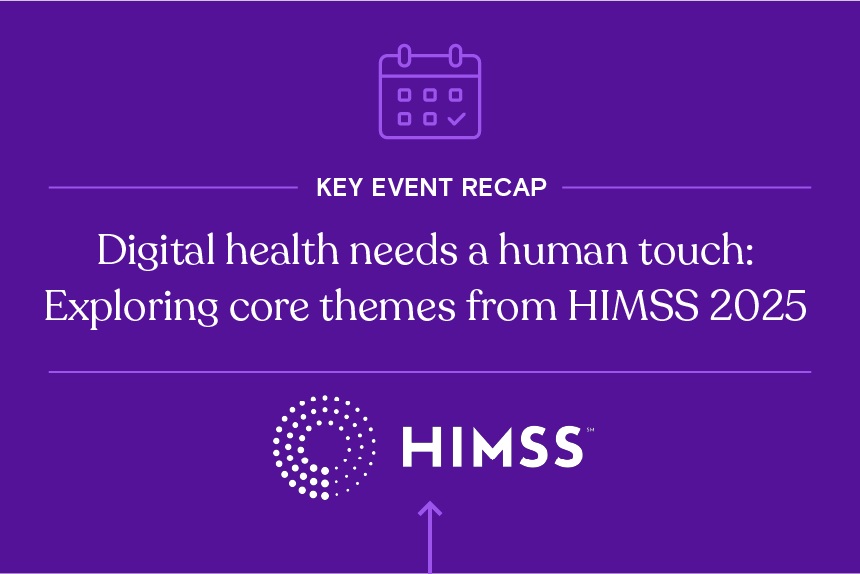In April 2015, Congress passed the Medicare Access and CHIP Reauthorization Act (MACRA). This legislation created a new Quality Payment Program (QPP) that would not only transform Medicare and Medicaid reimbursements, but also further drive quality improvement in the U.S healthcare system.
Healthcare providers participating in this incentive program can choose to be reimbursed through one of the following two models:
Though the qualifying criteria and reporting requirements differ slightly between these two models, the basic result is the same: providers are either rewarded or penalized based on the electronic clinical quality measures (eCQMs) they report.
As the Centers for Medicare and Medicaid Services (CMS) continue to evolve their quality reporting requirements, what steps can healthcare providers take to avoid facing payment penalties?
What are electronic clinical quality measures (eCQMs)?
eCQMs are metrics taken directly from an electronic health record system (EHR). In their quality assessments, CMS uses these measures to understand and evaluate many different aspects of patient care, including:
- Patient safety
- Clinical process
- Care coordination
- Population health, and
- Efficient use of healthcare resources
Healthcare providers participating in the Quality Payment Program are assessed on a number of hospital performance metrics, from all-cause hospital readmission rates to Hospital Consumer Assessment of Healthcare Providers and Systems (HCAHPS) survey measures. But electronic clinical quality measures represent a significant piece of their final score.
Hospitals are also required to report eCQMs as part of the CMS Hospital Inpatient Quality Reporting (IQR) Program or The Joint Commission’s ORYX Performance Measurement Initiative—an accreditation initiative that incorporates quality measurements within performance evaluation.
How can care providers use EHR systems to improve quality performance?
As a result of CMS’ meaningful use initiative in 2011, the vast majority of U.S. hospitals are utilizing an electronic health record or an electronic medical record (EMR) system. According to Definitive Healthcare’s Hospitals & IDNs database, 91.5 percent of hospitals are currently using an inpatient or ambulatory EHR system.
In addition to promoting care coordination and clinical safety, EHR systems can also be used to improve another important area of healthcare quality performance: patient experience.
Customer relationship management (CRM)
A customer relationship management (CRM) tool is a software solution that helps businesses organize and grow relationships with new and existing clients. Healthcare providers can integrate CRM technology within their EHR systems to improve patient experience in the following ways:
- Schedule appointments
- Send patient communications like appointment reminders and post-discharge instructions
- Set patient preferences
- Trace social determinants of health, and
- Track medical device or remote patient monitoring data
Given their reporting potential and analytical capabilities, healthcare CRMs are also able to help healthcare providers streamline patient billing and clinical data, track population health trends, and increase efficiency. One healthcare provider reported that integrating their EHR system with a healthcare CRM saved up to two hours in data entry per day.
Despite the many benefits of using a healthcare CRM, hospital technology implementation is still not as widespread as other healthcare technologies. Of the 7,250 active hospitals that Definitive Healthcare tracks, only 74.2 percent—or 5,380 total hospitals—are currently using a CRM with their EHR system.
Implementing a CRM system is one way that hospitals and other healthcare providers can improve quality performance and avoid financial penalties.
Patient engagement software
Another tool that healthcare providers can use is a patient engagement software. This term refers to any technology solution that allows providers to send communications and resources directly to their patients. Patient engagement software works much like a CRM in how it helps healthcare providers manage the patient-provider relationship.
Patient engagement software systems combine some aspects of patient portal software, practice management solutions, and medical billing systems to offer some of the following features:
- Secure two-way messaging
- New patient registration
- Patient scheduling
- Appointment reminders
- Patient education
- Prescription refills, and
- Online bill payment
Many patient engagement software solutions also allow patients to view their medical records, lab results, diagnostic images, and other health information. Some technologies even allow patients to securely share this information with other healthcare providers—a feature that helps to promote care coordination and prevent inefficiencies that often result from switching care providers or health networks.
Though patient engagement software represents a fast-growing sector in healthcare technology, only 4,274 hospitals tracked by Definitive Healthcare—about 59 percent—are currently using a patient engagement software within their EHR system.
How will COVID-19 impact quality reporting?
Since the onset of the COVID-19 pandemic in late January, many healthcare providers have been overwhelmed with sick patients.
In order to provide the best possible care within these extreme circumstances, many providers have had to find creative solutions—like reusing personal protective equipment (PPE) or modifying one ventilator to serve two patients—that might not align with the quality measures expected under normal conditions.
By normal quality reporting standards, hospitals are also penalized for things like high 30-day mortality rates, excess readmission ratio, and increases in the rate of hospital-acquired conditions or healthcare associated infections. In the midst of a pandemic, however, these things are all too common.
In light of this, CMS announced in late March that they would suspend all quality reporting requirements from January 1, 2020 through June 30, 2020. This means that hospitals and other healthcare providers won’t face any payment penalties as they fight against this novel virus.
Learn more
Quality improvement initiatives in healthcare are always changing, particularly as new technologies allow providers to better measure care quality and patient outcomes. Interested in learning more about how much healthcare quality improvement has changed within the past 60 years? Take a look at our blog about the History of Quality Improvement in Healthcare.
To learn more about the impact of COVID-19 in other areas of the healthcare industry, you can access our on-demand webinar replay: The Short-Term Prognosis for Elective Surgeries. In this 15-minute presentation, Todd Bellemare—Definitive Healthcare VP of Professional Services—discusses how the pandemic has impacted this lucrative market, and the surgical specialties we predict will recover most quickly.





